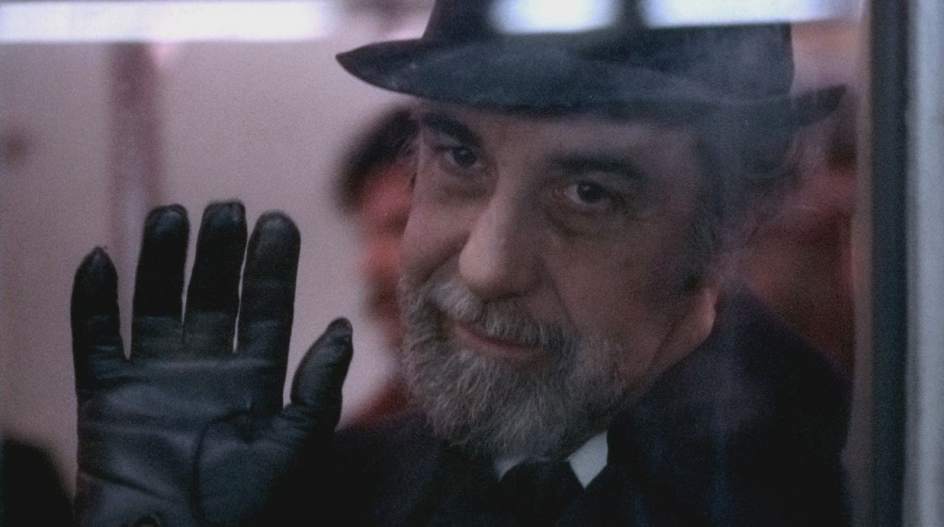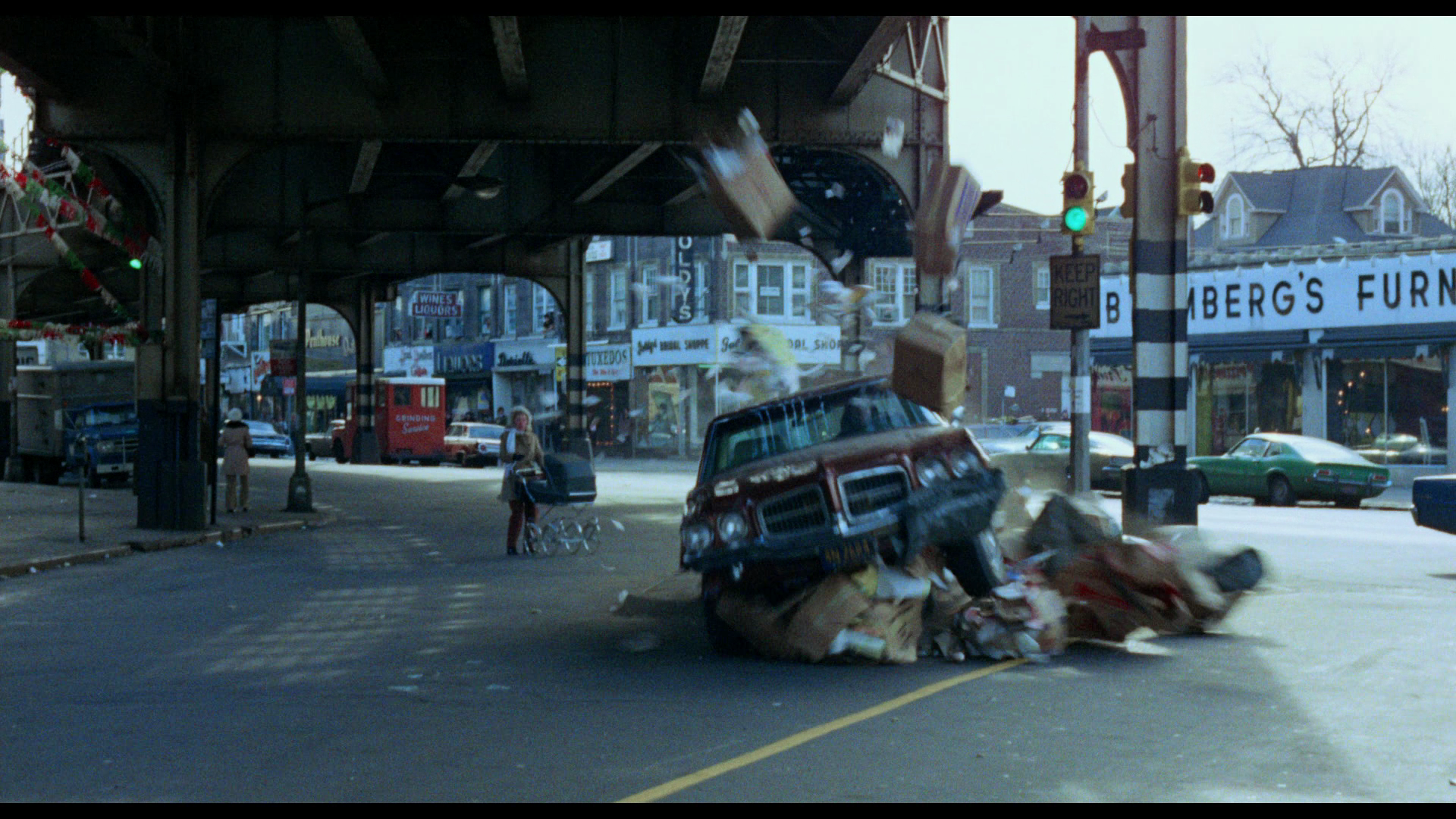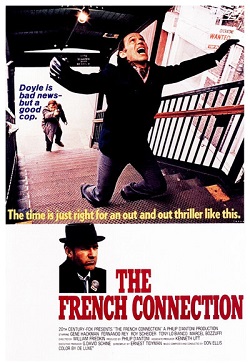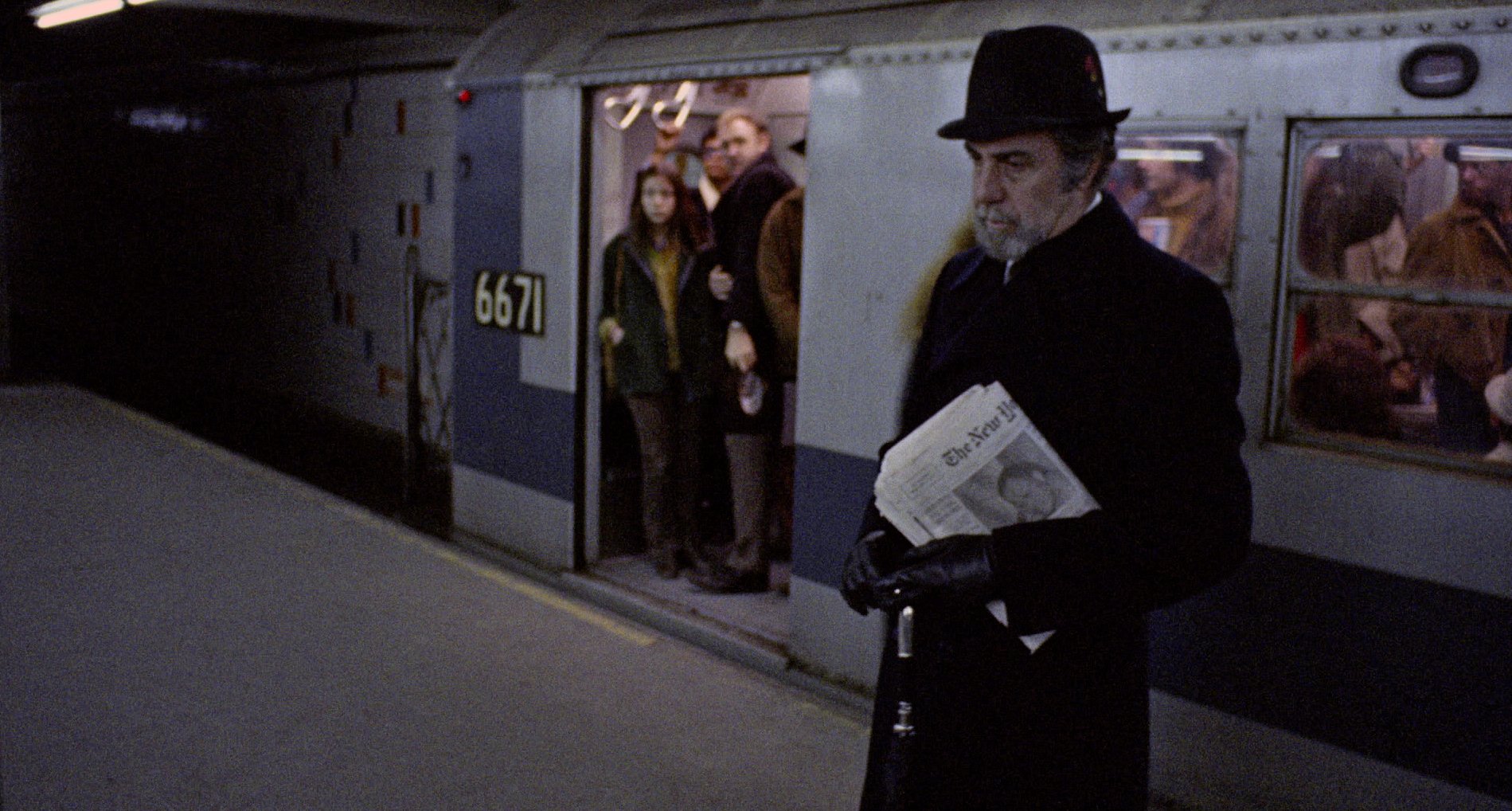The French Connection has so many positives in terms of story, performances and an iconic chase scene that we tend to forget that it is slightly dated and has a somewhat unpleasant main character, though I'd argue he's pushing more antihero than hero.
In Marseilles, drug kingpin Alain Charnier (Fernando Rey) is setting up a a major heroin smuggling operation with fading television star Henri Devereaux (Frederic De Pasquale) as his dupe. He'll get it through Customs by hiding the heroin in Devereaux's car, and has local dealer Sal Boca (Tony Lo Bianco) as his fence.
This is unknown to Detectives Jimmy 'Popeye' Doyle (Gene Hackman) and Buddy 'Cloudy' Russo (Roy Schieder). They work Narcotics, but so far are just dealing with low-level dealers. It isn't until one of Popeye's informants tells him of a major deal involving the French that Doyle stars diving into things. Doyle and Russo see that Boca is living a high life for someone running a corner store, and that the hotel that he visits has a shady lawyer named Joel Weinstock (Harold Gary). Putting the pieces together, Doyle and Russo push to investigate further.
This does not sit well with their higher-ups, Doyle having an unpopular reputation among the other members of the NYPD. In particular, Doyle once got a cop killed due to his 'hunches', something that still sets Doyle off. Nevertheless, Doyle and Russo get what they want with the feds involvement too.
 Charnier is becoming agitated by Boca's slow manner; while he manages to give Doyle the slip when the latter is following him, he does want this deal done quickly. Boca is having some difficulty but soon the deal is agreed to. Charnier agrees to have Doyle killed despite his belief that 'there will be others'.
Charnier is becoming agitated by Boca's slow manner; while he manages to give Doyle the slip when the latter is following him, he does want this deal done quickly. Boca is having some difficulty but soon the deal is agreed to. Charnier agrees to have Doyle killed despite his belief that 'there will be others'.The attempt on Doyle's life leads to a wild pursuit where Doyle chases the assassin attempting to flee on an elevated subway, endangering pedestrians and passengers alike. The attempted killer is himself killed, and now it becomes a battle between Doyle and Charnier.
Doyle gets the car he is convinced is 'dirty', but the men he thinks are part of the deal end up as low-level car thieves in the wrong place at the wrong time. The police tear the car apart but can find no drugs. It looks like Doyle is wrong, until Russo questions the weight of the vehicle. The slight discrepancy between the manufacturer's listed weight and the actual weight is enough for them to tear out the one part they didn't, where they find the pure heroin.
With that, it is only a matter of time before the police, fully aware of the French connection, let the deal go through, leading to a fight which leads to deaths and some arrests.
In a postscript, we find that Weinstock was indicted but the case was dismissed due to 'lack of evidence', Mrs. Boca got a suspended sentence, Deveareux four years for conspiracy, and Sal's brother who helped in this, a reduced sentence.
Charnier was not caught and is presumed in France, while Doyle and Russo were reassigned.
One of the most interesting and brilliant things in The French Connection is how the film shows the differences between the antagonists. Again and again we see the suave, elegant and perfectly cool Charnier matched against the volatile, slovenly Doyle.
The best sequence that shows their different manners is the chase between Charnier and Doyle. Without making drama out of things, we see in their manner how they react to things. We see both of them playing this cat-and-mouse game where each knows what the other wants, and director William Friedkin builds the tension by having them try to keep pace with each other's next move.
When they are at the subway station, one attempting to evade the other, the tension ramps up repeatedly until in a split second, the elegant Charnier's cane (a very symbol of his elevated status) pops out to allow him to evade the trigger-tempered Doyle, Charnier's arrogant goodbye wave putting the coda on the sequence.
It isn't until Doyle in the end has the upper hand, figuratively and literally, waving back at a surprised Charnier, that the man nicknamed 'Frog One' by Doyle shows the slightest bit of anger and surprise at being outwitted by this disheveled American cop.
 As much as the chase scene between the car and the elevated train in The French Connection is lauded (correctly so), I think the pursuit between Charnier and Doyle is equally brilliant. However, for many, the chase scene between the car and the train is the highlight, and it is so brilliantly filmed and edited.
As much as the chase scene between the car and the elevated train in The French Connection is lauded (correctly so), I think the pursuit between Charnier and Doyle is equally brilliant. However, for many, the chase scene between the car and the train is the highlight, and it is so brilliantly filmed and edited.It is not a surprise that both the director and the editor, Jerry Greenberg, won Oscars for their work. The tension of the chase scene never flags, building not just on the streets where an obsessed Doyle pursues his attempted assassin, but on the train itself.
We see the assassin killing people on the train, and the tension continues when he takes the train hostage and the conductor dies of a heart attack, leaving the train to crash.
It feels natural and real, not staged or elaborate. It's a credit to Friedkin and screenwriter Ernest Tidyman (also an Oscar-winner for the film) for keeping things grounded.
There's a natural feel to The French Connection, almost documentary-like. Part of it comes from Friedkin's work in documentary films, but it also comes from having a limited use of music. Wherein other action films the music might be loud, here, it is both somber and spare.
There is an urban grittiness to The French Connection, of a world that is believable and flawed, just like its protagonist. The French Connection is a showcase for Gene Hackman, who shows how he can change so smoothly. We see him as almost avuncular with kids as Santa Claus, then shift into a foul-tempered, foul-mouthed cop.
We should not like Popeye Doyle: he is a mess personally and a bit of a racist. However, we also see that being a cop is less job and more vocation, someone who will follow his own instincts no matter what. His last scene where he comes upon the body of the federal agent he accidentally killed is surprising in that Doyle isn't moved by his death.
As far as he's concerned, the only unfortunate thing is that it wasn't 'Frog One' lying there. That does not make him unfeeling or uncaring, just so focused on the task that other things fall by the wayside.
It is a brilliant performance by Hackman, who really digs into this role and makes it a complex character.
He is matched by Rey as the elegant, generally unruffled Charnier. Curiously, he was cast in a case of mistaken identity, being cast over another actor who had appeared in a film with Rey. Despite this odd set of circumstances, I think Rey is perfect in the role, his elegant, unruffled manner serving to show him as a strong antagonist.
Schieder had a smaller, less showy role, but made a good impression as the cooler, more rational partner of the volatile Doyle.
While The French Connection is dated in terms of look and manner, the film is still an extraordinary piece of film-making. It hearkens back to a time when gritty was how one would see New York, which is no longer the decaying city it once was. The language and violence might also make it a bit of a period piece, but we can see our lead as a flawed figure.
Intense, intelligent, with at least two excellent chase sequences and a methodology to both the criminals and the detectives, The French Connection excels on all fronts.
DECISION: A-
1972 Best Picture: The Godfather



No comments:
Post a Comment
Views are always welcome, but I would ask that no vulgarity be used. Any posts that contain foul language or are bigoted in any way will not be posted.
Thank you.